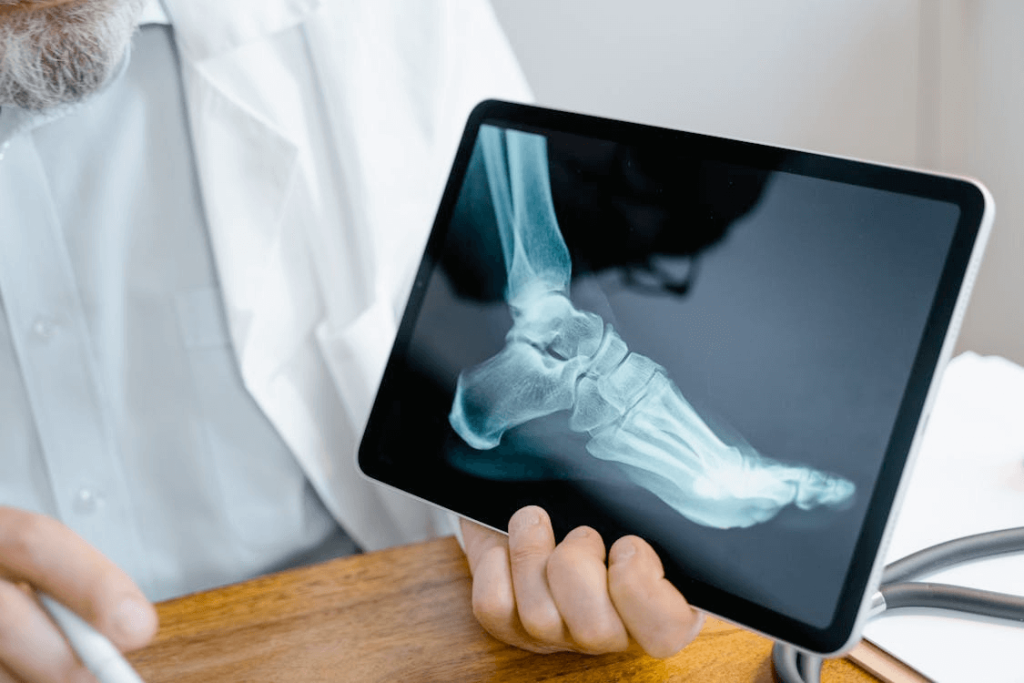Building a dream home is about creating a strong foundation. Similarly, ensuring a strong foundation for your health, particularly your bones, allows you and your family to enjoy every moment, unburdened by limitations.
Osteoporosis, often called the “silent disease,” slowly weakens bones, making them brittle and prone to bone fractures. But it doesn’t have to be a part of your family’s story. This guide provides actionable steps to prevent osteoporosis, ensuring strong bones for a vibrant and active life.

Photo by Tima Miroshnichenko
Why you need to focus on bone health
Our bones are far more dynamic than we often imagine. They are living, growing bone tissue, constantly remodeling throughout our lives. To keep our skeletal system robust, it’s helpful to understand a few key terms.
- Bone density: The amount of minerals in a bone
- Bone mass: The total amount of bone tissue in your body
Achieving a high peak bone mass during childhood and adolescence is crucial, as this is the densest your bones will ever be. After around age 30, bone mass naturally starts to decline, leading to lose bone mass and a point where you begin to develop osteoporosis. Understanding these fundamentals is the first step in actively working to prevent osteoporosis and maintain healthy bones.
How to promote healthy bones
Strong bones are built through daily habits. Consuming foods rich with health benefits, right nutrition, regular exercise, and mindful lifestyle choices, you can keep your bones healthy at every stage of life.
Have enough of the essential vitamins
Just as a house needs quality materials, our bones require specific nutrients to stay strong. Calcium and Vitamin D are the undisputed champions when it comes to bone health.
Calcium: The building blocks for strong bones
Calcium is the primary mineral that gives bones their strength and structure, making it indispensable for bone growth and maintaining bone mineral density. Ensuring you get enough calcium throughout your life is important, as your body continuously draws on this mineral to keep bones healthy. The body’s ability to absorb calcium is influenced by several factors, and without sufficient intake, your bones can suffer.
Fortunately, many delicious and accessible foods can help you meet your daily calcium needs. Dairy foods like milk, yogurt, and cheese are well-known sources. For those who are lactose intolerant or prefer plant-based options, leafy greens such as malunggay (moringa), kangkong (water spinach), and turnip greens are excellent choices.
Tofu, fortified foods, and certain nuts also contribute to your calcium intake. Aim to incorporate a variety of these calcium-rich foods into your balanced diet daily.

Photo by Alex Green
Vitamin D: The key to calcium absorption
While calcium provides the building blocks, vitamin D acts as the architect, ensuring those blocks are properly integrated into your bones. Vitamin D is essential because it helps the body absorb calcium from the food you eat.
Without enough vitamin D, even if you consume plenty of calcium, your bones won’t reap the full benefits.
One of the most natural and enjoyable ways to get enough vitamin D is through sun exposure. While you often hear that early morning or late afternoon is the best time to go out, midday is usually the best for optimal vitamin D synthesis. However, you need to limit your exposure to somewhere between 5 and 15 minutes.
For those who drink alcohol, have limited sun exposure or specific needs, other sources are available. Oily fish like sardines and tuna are good dietary sources. Many fortified foods, such as milk, orange juice, and cereals, also contain added vitamin D.
If dietary intake and sun exposure are insufficient, vitamin D supplements can be a beneficial way to ensure you have enough vitamin D to support bone health. It’s always best to consult a healthcare professional to determine the right dosage for you.
Practice exercise for bone strength
Beyond nutrition, physical exercise is a powerful tool in your arsenal against bone loss. Our bones respond to stress, much like muscles, growing stronger when challenged.
Engaging in regular physical activity is a vital component of osteoporosis prevention. Specifically, weight-bearing exercise helps to increase bone density and improve bone strength.
When you perform activities that require your body to work against gravity, your bones adapt by laying down more bone tissue, leading to stronger bones. This means that activities like walking, jogging, and even dancing can significantly improve bone health.

Photo by MART PRODUCTION
Here are some actionable examples of physical exercise you can incorporate into your routine:
Brisk walking
A simple yet effective form of weight bearing, brisk walking for 30 minutes most days of the week can make a big difference.
Dancing
Whether it’s Zumba, folk dancing, or just moving to your favorite tunes at home, dancing is an enjoyable way to put healthy stress on your bones.
Stair climbing
Opting for stairs instead of elevators or escalators is an easy way to incorporate weight-bearing into your daily life.
Resistance training
Activities that build muscle strength and muscle mass, such as lifting light weights or using resistance bands, also indirectly support bone health by strengthening the muscles that support your bones. Even simple bodyweight exercises like squats and lunges can be beneficial.
Aerobic exercise
While not always directly weight-bearing, aerobic exercise like swimming can improve overall fitness and complement your bone-strengthening routine.
Consistency is key when it comes to physical activity. Find activities you enjoy, and make them a regular part of your lifestyle.
Other lifestyle factors to prevent osteoporosis
While diet and exercise are fundamental, other lifestyle factors significantly affect bone health. Making informed choices can help mitigate the risk of osteoporosis.
Identifying risk factors for osteoporosis
Understanding the potential pitfalls is crucial for effective osteoporosis prevention. There are several common risk factors for osteoporosis that can increase your likelihood of developing this condition.
Some are beyond our control, such as a family history of osteoporosis and being an older adult. Women, particularly after menopause, have a higher risk of bone density loss due to hormonal changes.
Certain medical conditions, like rheumatoid arthritis, breast cancer, and prostate cancer, along with health conditions affecting the parathyroid glands, can also contribute to bone loss.
Additionally, long-term use of certain medications, such as proton pump inhibitors, has been linked to an increased risk of osteoporotic fractures.
Limit harmful habits and adopt healthy ones
Taking proactive steps to manage your lifestyle factors can significantly reduce your risk. A balanced diet, rich in whole foods and low in processed foods, is beneficial not just for bones but for overall health.
On the other hand, limiting alcohol consumption is crucial, as excessive alcohol intake can negatively affect bone density and calcium absorption. Studies show that alcohol consumption can interfere with the body’s ability to develop more bone tissue and can lead to an increased risk of broken bones.
Additionally, smoking has been definitively linked to poorer bone health. If you smoke, quitting is one of the most impactful steps you can take for your bones and overall well-being. By being mindful of these habits, you can build a stronger defense against osteoporosis and secure your future bone strength.

Photo by Thirdman
Take action as early as possible
Even with the best preventive measures, understanding your bone health status is crucial, especially as you age or if you have risk factors. Early detection can make a significant difference in managing and even slowing down bone loss.
Regular monitoring is a powerful tool in preventing severe osteoporosis. A bone density test, also known as a DXA scan, is the most common way to diagnose osteoporosis and accurately measure bone mineral density.
This test can identify low bone density before fractures occur, allowing for timely intervention. Your doctor might recommend a bone density test if you have significant risk factors.
If a bone density test reveals low bone density or an osteoporosis diagnosis, there are various approaches to treat osteoporosis. These can include lifestyle modifications, specific medications designed to increase bone density, and continued emphasis on enough calcium and vitamin D intake.
Early diagnosis allows for personalized strategies to improve bone health and prevent debilitating hip fractures and other osteoporotic fractures, ensuring you can continue to enjoy an active lifestyle.
Investing in your family’s health early
Just as a sturdy home provides security and comfort, strong bones are the foundation for a rewarding and active life.
By consistently applying these principles to prevent osteoporosis, you can improve your bone growth and maintain healthy bones throughout all stages of life.
Investing in your family’s bone health now means securing a future where you can all enjoy life’s adventures, free from the worries of broken bones. Strong bones contribute to your overall well-being and your ability to embrace every milestone with confidence.
Ready to build your family’s future on a strong foundation, both in health and home? Explore Camella’s communities designed for every Filipino family dreaming of living a healthier life.

Celebrate Life’s Milestones in Camella!
Make unforgettable memories in a Camella home.
Our communities are designed to elevate your living experience.


